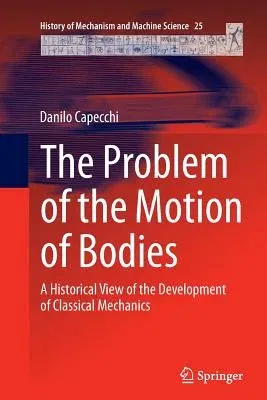Danilo Capecchi
(Author)The Problem of the Motion of Bodies: A Historical View of the Development of Classical Mechanics (Softcover Reprint of the Original 1st 2014)Paperback - Softcover Reprint of the Original 1st 2014, 3 September 2016

Qty
1
Turbo
Ships in 2 - 3 days
In Stock
Free Delivery
Cash on Delivery
15 Days
Free Returns
Secure Checkout
Part of Series
History of Mechanism and Machine Science
Print Length
554 pages
Language
English
Publisher
Springer
Date Published
3 Sep 2016
ISBN-10
3319343637
ISBN-13
9783319343631
Description
Product Details
Author:
Book Edition:
Softcover Reprint of the Original 1st 2014
Book Format:
Paperback
Country of Origin:
NL
Date Published:
3 September 2016
Dimensions:
23.39 x
15.6 x
2.92 cm
Genre:
Science/Technology Aspects
ISBN-10:
3319343637
ISBN-13:
9783319343631
Language:
English
Location:
Cham
Pages:
554
Publisher:
Weight:
784.71 gm

